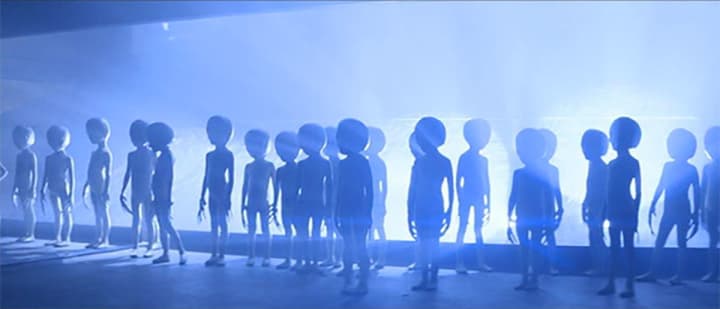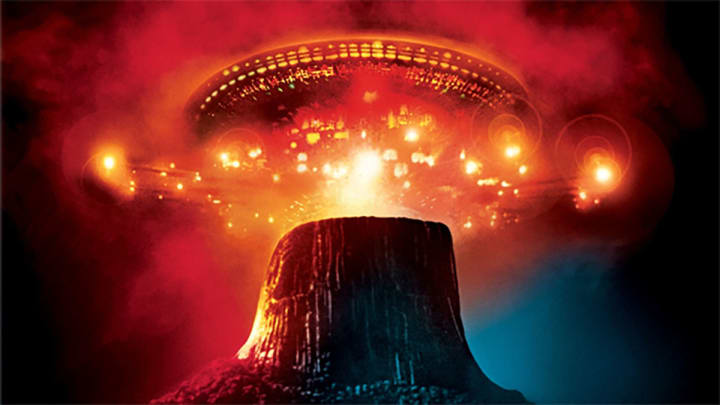'Close Encounters of the Third Kind' Holds Up
Much like 2016's 'Arrival' nearly 30 years earlier, 1977's 'Close Encounters of the Third Kind' took a very original and very cerebral approach to sci-fi storytelling.
What made the movie special was the way it approached the topic of first contact. It was not through the typical science fiction fare and space battles we have come to expect from 21st century Hollywood. Much like 2016's, Arrival, nearly 30 years earlier, 1977's Close Encounters of the Third Kind took a very original and very cerebral approach to sci-fi storytelling. Rather than the challenges of interspecies linguistics, the film used music as the unifying language between man and extraterrestrials. This theory was later explored by then OMNI editor Claire Evans. Perhaps the success of Arrival is why Close Encounters of the Third Kind holds up for me. Sci-fi films that, at their core, are not relying on special effects but rather challenge the intellect in a more organic fashion often best stand the test of time.
A brilliant light emanating from the quiescent skies above little Barry Guiler’s house awakens him from a sound sleep. The ray that sweeps over Indiana in Close Encounters of the Third Kind animates Barry's toys and provokes from him a steady, irrepressible giggle. The cosmic magic show performed for Barry (Cary Guffey) suggests that we are not alone and that the creatures above us may come from far away but they're also far out. They've got a great sense of humor, anyway.
Roy Neary (Richard Dreyfuss), a local power repairman sent off to work on a black-out in Muncie, doesn't initially share this positive feeling about his experiences with the mysterious call a Close Encounter of the Second Kind-physical evidence of a UFO profoundly affects Roy's behavior. This and their lovely suburban household that Daddy's seen some flying saucers.

The only visible sign of Roy's sanity is an inexplicable red sunburn that covers half his face. After he overcomes the humiliation of the pervasive disbelief around him, Roy lapses into a state of blissful obsession. Like Barry and others who've seen the light, all Roy can focus on is his Close Encounter. When the power company calls to fire Neary, he couldn't care less about his job, which is exactly how I would react if I had seen what he saw. Unfortunately there were no iPhones to take pictures with.
Roy's already thinking about an Encounter of the Third Kind, actual contact with the occupants of a UFO. Jillian Guiler (Melinda Dillon) becomes a believer and Roy's only ally when she accidentally spots alien vehicles on a nocturnal search for her son. Both are at first frightened but ultimately drawn to the source of the light.
Most of Close Encounters, written and directed by Steven Spielberg, consists of important social satire mixed with a science-fiction detective story. An international team of scientists lead by Lacombe (Francois Truffaut).
The aliens scare the shit out of very ordinary man, but what UFO specialists would be good at convincing his wife Ronnie (Teri Garr) of extraordinary phenomena. There is a 'silence group' eager to clinically investigate the Indiana sightings without the participation of civilians. The mixture of a scientific-military cover-up (at the time the least effective aspect of the story, but in light of a world with WikiLeaks quite plausible) with a more playful look at the havoc extraterrestrial activity wreaks on an average middle-class family stretches Spielberg's central concept whether we are in fact 'not alone’ into a trippy, almost out of focus world.
The amount of attention paid to the behavior of the earthlings in Close Encounters, their various struggles with denial and discovery, causes the film to stall a bit in the middle. The human activity in the film raises basic questions and the characters, for the most part, are seem drawn to be incomplete by design. The idea of attempting to blow people away with intense visuals and then fill in the details in an offhand manner reveals a Spielberg perspective, that in the face of extreme events, our personal issues seem minuscule, at times even laughable.
You will get awfully caught up in the sporadic special effects sequences, masterfully achieved with the aid of Douglas Trumbull, to overlook some flaws in the script's logic, such as the large amounts of physical destruction allegedly covered-up so smoothly and quickly. The way the Neary family just drives off in their station wagon and disappears for the remainder of the film is indicative of the emphasis of event over human emotion.

The director has the technical proficiency to frighten and astound a viewer, but he reserves all his intensity for the mechanical elements in his films. Close Encounters falters only in that the action happens to people the viewer can't know well enough to care about, and perhaps are not supposed to.
Close Encounters of the Third Kind is an instinctual attempt to present a compelling and intelligent mass entertainment film. The sense of excitement and magic that filmgoing once represented is present in the best parts of Close Encounters. The warmth and charm of Guffey and Truffaut stand out against Richard Dreyfuss' cool and steady performance as the central character. This cloned definition of Roy Neary, including the same redundant little chuckle and nervous mannerisms on which Dreyfuss always relies, prevents the viewer from connecting intimately with his character.
When Steven Spielberg fills the black holes in his vision and applies his energy to all the dimensions of a movie equally, which he comes close to with Close Encounters of the Third Kind, it is always an amazing ride.
About the Creator
Mike Mavenful
Baby boomer, Pharmacologist, Movie reviewer and proud grandfather.






Comments
There are no comments for this story
Be the first to respond and start the conversation.